#Ostara wreathe
Explore tagged Tumblr posts
Text
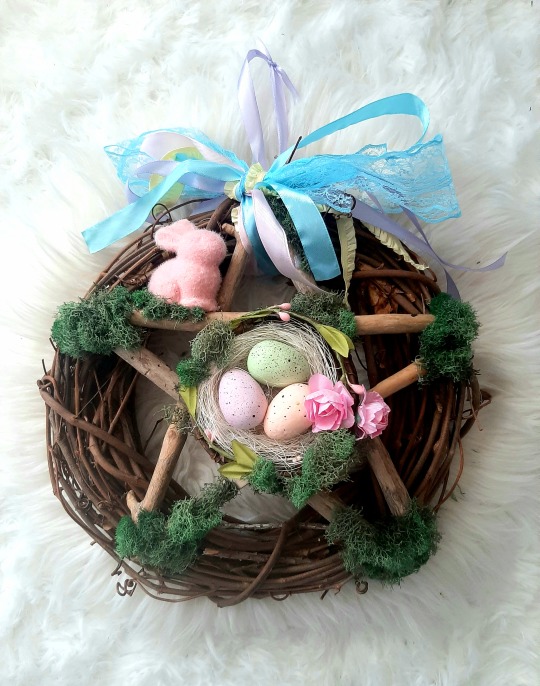
Ostara Wreathe 🌸🧸🐇💕🌷🐦🎀 by avalon princess //
#Ostara#Wreathes#Spring witch#Fairycore#Cottagecore#Rabbit#Moss#Mosscore#Pentacle#Witch#Ostara wreathe#Handmade#Artist#Maker#Small business
68 notes
·
View notes
Photo


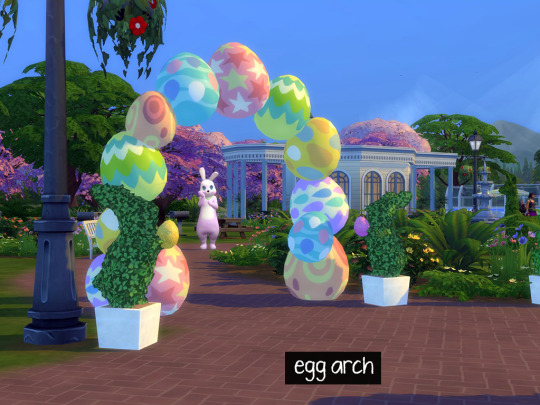
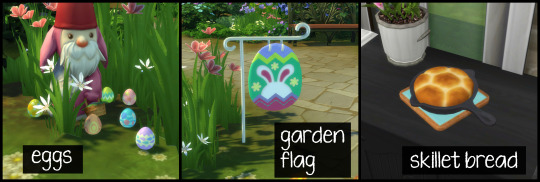

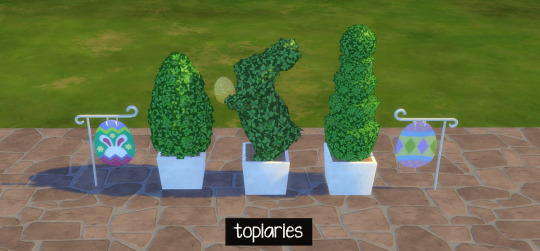


🐰 Animal Crossing Easter Set 🐰
17 items | Sims 4, Base game compatible. I have added additional swatches to some of the items. I hope you enjoy! Set contains: -2 Easter Balloons | 2 swatches | 1208 poly -Easter Chocolates | 1 swatch | 1278 poly -Basket 1 | 1 swatch | 1122 poly -Basket 2 | 1 swatch | 2383 poly -Table Decor | 1 swatch | 1076 poly -Clock | 1 swatch | 1430 poly -Tree | 1 swatch | 4013 poly -Wreath | 1 swatch | 1200 poly -Egg | 6 swatches | 456 poly -Garden Flag | 1 swatch | 1066 poly -Egg Arch | 1 swatch | 2820 poly -Planter | 9 swatches | 2402 poly -Topiary Bunny | 6 swatches | 1197 poly -Topiary Cone | 4 swatches | 1224 poly -Topiary Round | 4 swatches | 1236 poly -Bread Skillet | 1 swatches | 878 poly
Always suggested: bb.objects ON, it makes placing items much easier. For further placement tweaking, check out the TOOL mod. Type “Animal Crossing Easter” into the search query in build mode to find quickly. You can always find items like this, just begin typing the title and it will appear.
💗 Anyone here via SimsFinds, please see THIS POST
📁 Download all or pick & choose (SFS, No Ads): https://simfileshare.net/folder/183768/
📁 Alt Download (still no ads): https://mega.nz/folder/c5gARYRZ#gDCbtSlbC87Uvn5Z-p2mNQ
As always, please let me know if you have any issues! Happy Simming! ✨ If you like my work, please consider supporting me:
★ Patreon 🎉 ❤️ |★ Ko-Fi ☕️ ❤️ ★ Instagram 📷
Thank you for reblogging ❤️ ❤️ ❤️
@sssvitlanz @maxismatchccworld @mmoutfitters @coffee-cc-finds @itsjessicaccfinds @gamommypeach @stargazer-sims-finds @khelga68 @suricringe @vaporwavesims @mystictrance15
#sims 4 cc#ts4cc#s4#sims 4 easter#sims 4 animal crossing#sims 4 food#sims 4 sweets#sims 4 egg#sims 4 flag#sims 4 garden#sims 4 wreath#sims 4 planter#sims 4 plants#sims 4 shrub#sims 4 topiary#sims 4 clock#sims 4 balloons#sims 4 basket#sims 4 ostara#sims 4 holiday#sims 4 maxis match#simdertalia
384 notes
·
View notes
Text
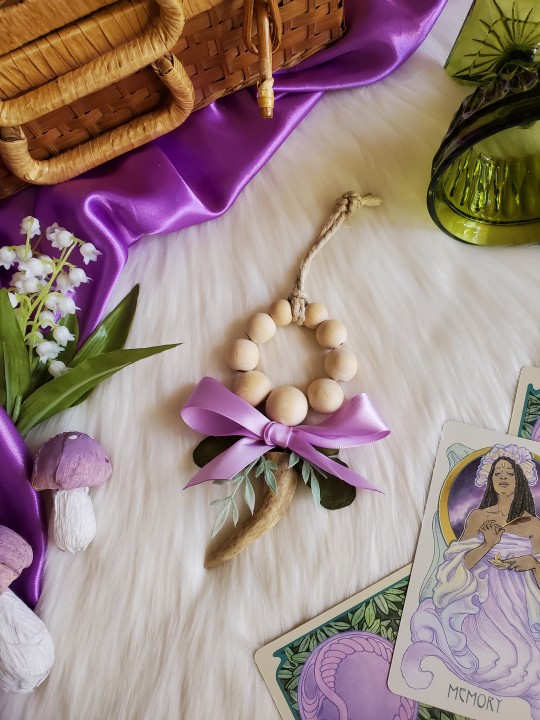
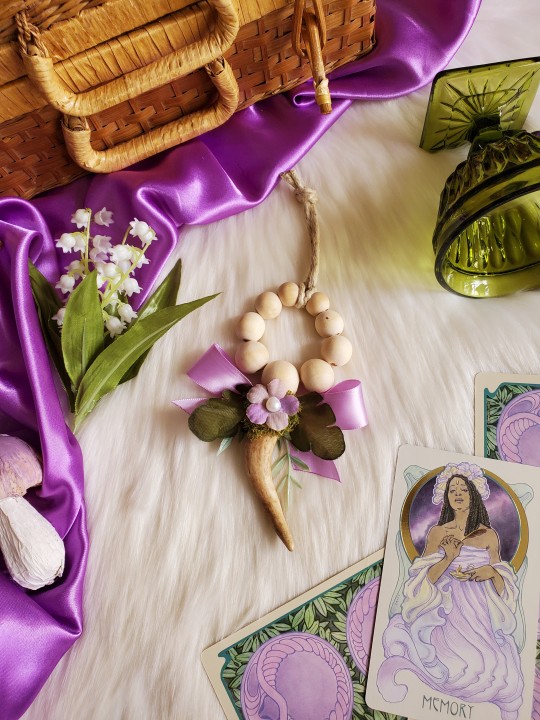
Deer Antler Floral Ostara Beaded Wreath Ornament 🌸
Featuring a wreath made with round wooden beads that dangles a deer antler tip. The ornament is adorned with a lilac satin ribbon bow, moss, faux greenery, a pink flower and Freshwater Pearl. It is suspended by a thick hemp cord loop
It measures 8 inches
All antlers utilized in our pieces are ethically sourced and cruelty free
Buy it here
#rabbitpaws#vulture culture#deer antler#altar#witch altar#ostara#cottage witch#springtime#green man#artemis#wheel of the year#horned god#pagan art#forest witch#green goddess#floral wreath#tarot cards#mushrooms#beltane#sabbats#woodland#paganism#floral#cernunnos#antler#spring equinox
36 notes
·
View notes
Photo
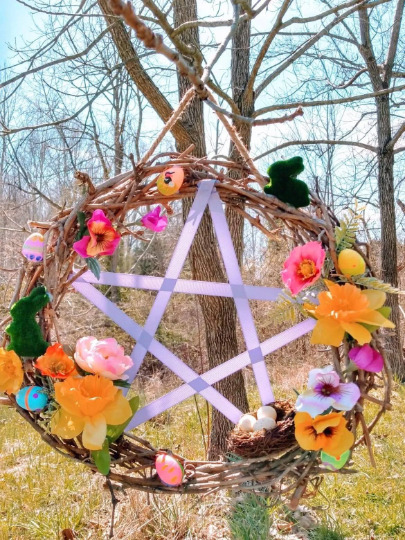
My partner Adreama made this beautiful Ostara wreath.
#ostara#eostre#wreath#spring equinox#spring#fake flowers#handcrafted#pagan wicca#wickedwitchesdesign#witch#witches
44 notes
·
View notes
Photo

0 notes
Text
✿ A list of most (if not all) wicca holidays
✮ Lammas (Lughnasadh) – Pagan/Wiccan Aug 1st
Lammas, also known as Loafmas or Lughnasadh, commemorates the harvest of the first grains, primarily for breadmaking. Lughnasadh itself is named after Lugh, a Celtic deity associated with grain. Lammas celebrations include feasting, crafting corn dollies, and participating in games and contests as a way to honor Lugh and the bounty of the season.
✮ Mabon (Fall Equinox) – Pagan/Wiccan Sept 21st
Mabon, celebrated at the fall equinox, marks the transition to the approaching darkness of the coming winter months. Mabon celebrations involve giving thanks for the harvest, making offerings of fruits and vegetables, and performing ceremonies to honor the equinox’s change from the light half of the year to the dark. Decorations made of corn, squash, vines and pumpkins are common.
✮ Samhain (All Hallows Eve) – Pagan/Wiccan Oct 31st
Samhain today marks the end of the harvest, the start of the Pagan/Wiccan New Year, and the honoring of our ancestors and the dead. Samhain celebrations include lighting candles, setting up altars, and modern activities like costume parties, trick-or-treating, and jack-o’-lanterns.
✮ Yule (Winter Solstice) – Pagan/Wiccan Dec 21st
Yule, celebrated at the winter solstice, marks the day on which the “sun is reborn.” Yule celebrations include the burning of the Yule log, kissing under the mistletoe, decorating homes with holly and evergreen branches, and performing rituals to welcome the return of the sun’s warmth and light to the world.
✮Imbolc (Candlemas) – Pagan/Wiccan Feb 2nd
Imbolc heralds the first signs of spring and is dedicated to Brigid, a Celtic goddess of poetry and fire who was later canonized by the Catholic Church. Imbolc celebrations include candlelit processions, the lighting of a hearth fires, and sending blessings to the fields and farm animals.
✮Ostara (Spring Equinox) – Pagan/Wiccan May 21st
Ostara, celebrated at the spring equinox, marks the beginning of the light half of the year and the arrival of spring. Ostara is celebrated by the coloring and decorating of eggs, planting of seeds, and performing rituals that honor the balance of light and dark.
✮Beltane (May Day) – Pagan/Wiccan May 1st
Beltane is a joyful fertility festival that welcomes the height of spring and celebrates the divine feminine and masculine coming together in fruitful union. Beltane celebrations include dancing around the Maypole, wearing wreaths or crowns of flowers, the crowning of a May Queen, and the lighting of bonfires.
Litha/Midsummer (Summer Solstice) – Pagan/Wiccan June 21st
Litha, celebrated at the summer solstice, marks when the sun is at its maximum power and the longest day of the year. Litha celebrations include lighting bonfires, outdoor feasts, and rituals that honor the warmth and light of the sun and the season’s abundance.

#coven#witch coven#witchcraft#witches#witchblr#witchcore#green witch#witch community#witch aesthetic#witchy vibes#paganblr#pagan community#pagan witch#paganism#pagan#hellenic pagan#wiccan#pagan wicca#wiccablr#wicca#wiccalife#black girl magic#magical girl#healing#ritual#spells#spellcasting#spellcraft#spellwork#magic
105 notes
·
View notes
Text

TWELVE NIGHTS OF YULE
●
The first night of Yule - MOTHER NIGHT (Módraniht)
Sacred to Frigg, Freya, and the Disir
Industriousness
Yulmonath
●
Second night of Yule - THE WILD HUNT
Sacred to Odin and Ancestors
Perseverance
Horning
●
Third night of Yule
Sacred to Mani and Darkness
Courage
Lenting
●
Fourth night of Yule
Sacred to Aegir, Njord, and Freyr
Love
Ostara
●
Fifth night of Yule
Sacred to Community
Hospitality
Merrymoon
●
Sixth night of Yule
Sacred to Eir and Healing
Discipline
Midyear
●
Seventh night of Yule
Sacred to Thor and Children
Fidelity
Haymoon
●
Eighth night of Yule
Sacred to Skadi and Ullr
Truth
Harvest
●
Ninth night of Yule
Sacred to Odin and Fathers
Honor
Shedding
●
Tenth night of Yule
Sacred to Sunna and Light
Justice
Hunting
●
Eleventh night of Yule
Sacred to the Valkyries and Warriors
Self Reliance
Fogmoon
●
Twelfth night of Yule - Wassail
Sacred to all Divine Friends and Oath Night
Wisdom
Snowmoon
●
Yuletide Blessings to Everyone. Hail!
●
Posted to celebrate sunrise upon the Winter Solstice December 2024.
Original text was copied from Frá Norðri (Facebook) from December 2022. Holly and wreath images were from PNGwing.com.
Design was created by @gifts-of-heimdall-runes to celebrate a year with the Anglo-Saxon / Anglo-Northumbrian Runes in 2024.
#gifts of heimdall runes#gifts of heimdall#runes#futhark#norse runes#futhark runes#rune art#elder futhark#elder futhark runes#rune#Gifts of Heimdall#Gifts of Heimdall Runes#Gifts-of-Heimdall-Runes#Anglo-Saxon Runes#Anglo-Northumbrian Runes#anglo-saxon runes#anglo-saxon staves#Rune Art#Rune Designs#rune designs#Yule#Yule 2024#yule#yule 2024#norse pagan#yule blessings#Norse pagan rune art
26 notes
·
View notes
Text
Imbolc 2024

The celebration of Imbolc is the promise of spring’s return, as it sits on the midpoint between the winter solstice and the spring equinox.
For many years, I never really felt anything special associated with this time of year. Here, it's still cold and there isn't the grandeur that Yule or Ostara can hold.
But recently, really since the pandemic, it seems that Imbolc has meant more and more to me as that moment in the depths of the cold when instead of suffering in the moment, we turn our focus to the hope of new plans for the year.
Imbolc is a time to plan what seeds you will plant this spring to harvest in the coming fall, and I take that very metaphorically, although it can be literal. In a way, it's almost a recommitment to your new year's resolutions, or perhaps the clarity of which ones are truly important for the year.
In folklore, this holiday is associated with the Goddess or Saint Brigid, who holds the flames of fertility and healing and one of the plants sacred to her is the blackberry. Although I'm not invested in the mythology, I do look forward to baking a lovely blackberry pie every Imbolc.
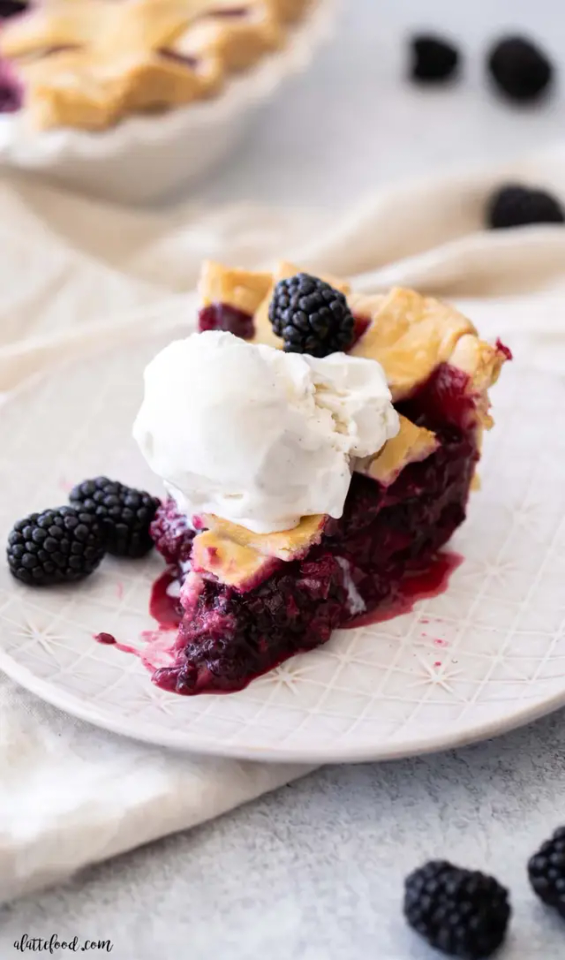
This is also a time I like to switch my decor, taking down any twinkling wreaths and using fresh, cool winter colors until they are replaced at the Spring Equinox. There is a sense of cleansing the previous year out and creating a blank slate for what is to come.
However you choose to celebrate, take a moment for yourself to visualize what is important to you this year, grab a calendar, and plant your important dates and goals.
60 notes
·
View notes
Text
✨️✝️🕯 Things I Have on my Altar as a Christian Witch 🕯✝️✨️
✨️ A cross
✨️ Sun, moon and rain water
✨️ Ethically sourced sage
✨️ A bell
✨️ A wine glass
✨️ A mini New Testament Bible
✨️ Flowers
✨️ My favorite crystals and stones
✨️ Candles (usually in colors corresponding to the holidays)
✨️ Incense wax burner
✨️ Salt
✨️ Decorations for holidays (i.e. colored eggs and flowers galor for Easter and Ostara, a holly wreath and a small nativity set for Christmas and Yule, pumpkins and autumn leaves for Mabon with added jack-o-lanterns and darker colors for Halloween and Samhain, etcetera)
#the wine glass was meant to be for wine offerings but now houses things i find on nature walks and little gifts from friends 💜#this is in no way a list of what you “should” have on your altar as a christian witch#it's just a list of things that i have on mine that i find handy or nice to have on there 😊#christian witch#witchy christianity#witch#witchcraft#witch altar#altar#christian witch altar#christian altar#christian#spiritual christian#not listed is a small pride flag on there since jesus loves everyone and i am very very gay 🩷🏳️🌈
62 notes
·
View notes
Text
Pagan Holidays
Origin
The Wheel of the Year is an annual cycle of seasonal festivals, observed by many pagans, consisting of the year's main solar events, solstices and equinoxes, and the midpoints between them. While names for each festival vary among diverse pagan traditions, they often refer to the four solar events as "quarter days", with the four midpoint events as "cross-quarter days". Observing the cycle of the seasons has been important to many people, both ancient and modern. Contemporary Pagan festivals that rely on the Wheel are based to varying degrees on folk traditions, regardless of actual historical pagan practices. Among Wiccans, each festival is also referred to as a Sabbat, based on Gerald Gardner's view that the term was passed down from the Middle Ages. Modern conceptions of the Wheel of the Year calendar are heavily influenced by mid-20th century british paganism. Historical and archaeological evidence suggests ancient pagan and polytheist peoples varied in their cultural observations; Anglo-Saxons celebrated the solstices and equinoxes, while Celts celebrated the seasonal divisions with various fire festivals.
Dates and Offerings
Dates may be on the days of the quarter and cross-quarter days proper, the nearest full moon, the nearest new moon, or the nearest weekend for secular convenience. The festivals were originally celebrated by peoples in the middle latitudes of the Northern Hemisphere. Consequently, the traditional times for seasonal celebrations do not agree with the seasons in the Southern Hemisphere or near the equator. Pagans in the Southern Hemisphere often advance the dates 6 months to coincide with their seasons. Offerings of food, drink, various objects, etc. have been central in ritual to and for deities for millennia. Modern pagan practice strongly avoids sacrificing animals in favour of grains, herbs, milk, wines, incense, baked goods, minerals, etc. Burying and leaving offerings in the open are also common in certain circumstances. The purpose of offering is to benefit the deity, show gratitude, and give something back, strengthening the bonds between humans and divine and between members of a community.
Festivals
Winter Solstice (Yule, Saturnalia, Midwinter)
Midwinter, known commonly as Yule or within modern Druid traditions as Alban Arthan, has been recognised as a significant turning point in the yearly cycle since the late Stone Age. The reversal of the Sun's ebbing presence in the sky symbolizes the rebirth of the solar god and foretells the return of fertile seasons. From Germanic to Roman tradition, this is the most important time of celebration. Practices may vary but common offerings, feasting, and gift giving are common elements of Midwinter festivities. Bringing sprigs and wreaths of evergreenery (such as holly, ivy, mistletoe, yew, and pine) into the home and tree decorating are also common during this time.
Imbolc (Candlemas)
The cross-quarter day following Midwinter falls on the first of February and traditionally marks the first stirrings of spring. It aligns with the contemporary observance of Groundhog Day. It is time for purification and spring cleaning in anticipation of the year's new life. For Celtic pagans, the festival is dedicated to the goddess Brigid, daughter of The Dagda and one of the Tuatha Dé Danann. Among Reclaiming tradition Witches, this is the traditional time for pledges and rededications for the coming year.
Spring Equinox (Ostara)
Derived from a reconstruction produced by linguist Jacob Grimm of an Old High German form of the Old English goddess name Ēostre, Ostara marks the spring equinox in some modern Pagan traditions. Known as Alban Eilir to modern Druid traditions, this holiday is the second of three spring celebrations, the midpoint between Imbolc and Beltane, during which light and darkness are again in balance, with light on the rise. It is a time of new beginnings and of life emerging further from the hold of winter.
Beltane (May Eve)
Traditionally the first day of summer in Ireland, in Rome the earliest celebrations appeared in pre-Christian times with the festival of Flora, the Roman goddess of flowers. Since the Christianisation of Europe, a more secular version of the festival has continued in Europe and America, commonly referred to as May Day. In this form, it is well known for maypole dancing and the crowning of the Queen of the May. Celebrated by many pagan traditions, this festival recognizes the power of life in its fullness, the greening of the world, youthfulness and flourishing.
Summer Solstice (Litha)
Midsummer is one of the four solar holidays and is considered the turning point at which summer reaches its height and the sun shines longest. Among the Wiccan sabbats, Midsummer is preceded by Beltane, and followed by Lammas or Lughnasadh. Bede writes that Litha means gentle or navigable, because in both these months the calm breezes are gentle and they were wont to sail upon the smooth sea. The sun in its greatest strength is greeted and celebrated on this holiday. While it is the time of greatest strength of the solar current, it also marks a turning point, for the sun also begins its time of decline as the wheel of the year turns.
Lughnasadh (Lammas)
Lammas or Lughnasadh is the first of the three Wiccan harvest festivals, the other two being the autumnal equinox, or Mabon, and Samhain. Wiccans mark the holiday by baking a figure of the god in bread and eating it, to symbolise the sanctity and importance of the harvest. The Irish name Lughnasadh is used in some traditions to designate this holiday. Wiccan celebrations of this holiday are neither generally based on Celtic culture nor centered on the Celtic deity Lugh. This name seems to have been a late adoption among Wiccans. In early versions of Wiccan literature the festival is referred to as August Eve. The name Lammas implies it is an agrarian-based festival and feast of thanksgiving for grain and bread, which symbolises the first fruits of the harvest.
Autumn Equinox (Mabon)
The holiday of the autumnal equinox, Harvest Home, Mabon, the Feast of the Ingathering is a modern Pagan ritual of thanksgiving for the fruits of the earth and a recognition of the need to share them to secure the blessings of the Goddess and the Gods during the coming winter months. The name Mabon was coined by Aidan Kelly around 1970 as a reference to Mabon ap Modron, a character from Welsh mythology. Among the sabbats, it is the second of the three Pagan harvest festivals.
Samhain
Samhain is one of the four Greater Sabbats among Wiccans and Pagans. Samhain is typically considered as a time to celebrate the lives of those who have passed on, and it often involves paying respect to ancestors, family members, friends, pets, and other loved ones who have died. Aligned with the contemporary observance of Halloween and Day of the Dead, in some traditions the spirits of the departed are invited to attend the festivities. It is seen as a festival of darkness, which is balanced at the opposite point of the Wheel by the festival of Beltane, which is celebrated as a festival of light and fertility. Many Neopagans believe that the veil between this world and the afterlife is at its thinnest point of the year at Samhain, making it easier to communicate with those who have departed.
Dates
Yule~ December 20-23
Imbolc~ February 1
Ostara~ March 19-22
Beltane~ May 1
Litha~ June 19-23
Lughnasadh~ August 1
Mabon~ September 21-24
Samhain~ October 31- November 1
#divination#greek mythology#norse#norse mythology#pagan#pagan witch#spirituality#witch community#witchblr#grimoire#pagan holidays#festival
3 notes
·
View notes
Text

*NEW* Mini Enchanted Forest Wreathes 🌿💕🧚🏼♀️
#wreathes#enchanted forest#moss#faeriecore#cottagecore#ribbons#small business#artist#wildcrafted#handmade#fae#faery witch#celtic#holy trinity#home blessing#house blessing#spring decor#ostara#spring#mosscore#fairycore#pagan shop#enchanting#fairy tale#fantasy#love#circle#protection#healing#art
17 notes
·
View notes
Text
𝓼𝓪𝓫𝓫𝓪𝓽𝓼
these are pagan holidays that's on the wheel of the year. many of them are linked to an annual solstice or equinox. there's eight different sabbats to celebrate
𝐲𝐮𝐥𝐞 (𝟐𝟎-𝟐𝟑 𝐝𝐞𝐜𝐞𝐦𝐛𝐞𝐫): the winter solstice marks the first day of winter and the shortest day of the year. a solar festival in celebration of the return of the sun and light. the solstice is a turning point in the wheel of the year, when the sun symbolically dies and is reborn. it is a twelve day party to celebrate the rebirth of the sun. it is also a time to strengthen bonds with family and friends
𝐢𝐦𝐛𝐨𝐥𝐜 (𝟏𝐬𝐭 𝐟𝐞𝐛𝐫𝐮𝐚𝐫𝐲): imbolc marks the midpoint of winter, it is the return of the sun, banishing winter and welcoming the wake up call of spring, a festival of lights. the day is celebrated with candles and fire to symbolize the power of the sun's illumination in nature and new beginnings in ourselves. it represents spiritual growth
𝐨𝐬𝐭𝐚𝐫𝐚 (𝟏𝟗-𝟐𝟐 𝐦𝐚𝐫𝐜𝐡): ostara is a festival celebrating the eternal cycle of nature. on this day, witches traditionally decorate their houses with wreaths of brushwood, colorful ribbons and flowers to welcome the spirits of nature. this holiday is the second of three spring celebrations, during which light and darkness are again in balance, with light on the rise. it is a time of new beginnings and of life emerging further from the grips of winter
𝐛𝐞𝐥𝐭𝐚𝐧𝐞 (𝟏𝐬𝐭 𝐦𝐚𝐲): beltane marks the emergence of the young god into manhood. stirred by the energies at work in nature, he desires the goddess. they fall in love, lie among the grasses and blossoms, and unite. the goddess becomes pregnant of the god. witches celebrate the symbol of her fertility in ritual. in celebration of the day witches rose at dawn to gather flowers and green branches from the fields and gardens, using them to decorate the may pole, their homes and themselves. the flowers and greenery symbolize the goddess, the pole the god. beltane marks the return of vitality, of passion and hopes cunsummated
𝐥𝐢𝐭𝐡𝐚 (𝟏𝟗-𝟐𝟑 𝐣𝐮𝐧𝐞): the summer solstice celebration marking the longest day and shortest night of the year. a solar festival when the power of the sun is the highest, brightest and longest. nature is alive, fields and fruits are growing towards harvest. herbs gathered on this day are extremely powerful. at twilight on this day the portals between the worlds open and the faery folk may pass into our world. field and forest elves, sprites and faeries abound in great numbers making this a great time to commune with them. the warm and light, the abundance and beauty of the earth and all she provides is celebrated on litha
𝐥𝐮𝐠𝐡𝐧𝐚𝐬𝐚𝐝𝐡 (𝟏𝐬𝐭 𝐚𝐮𝐠𝐮𝐬𝐭): is marking the middle of summer and is the first of three harvest celebrations. this is when plants first start to drop fruits or seeds and the lands are ripe for harvesting. we celebrate the bounty of the earth with the first harvests of grain, wheat, fruits and vegetables. celebration begins the night before with large feats and plenty of food and drink. it is the time to complete the goals and projects you have started and planted in yourself earlier in the year
𝐦𝐚𝐛𝐨𝐧 (𝟐𝟏-𝟐𝟒 𝐬𝐞𝐩𝐭𝐞𝐦𝐛𝐞𝐫): also known as the second harvest. a time when the darkness of night begins to conquer the light of day. it is the time to celebrate the harvest and the hard work done, as well as to thank the earth for it's beautiful harvest of fruit, squash, grains and vegetables. mabon is also known as the witches thanksgiving, a time to give thanks for all we have, for all we are and for all the future holds
𝐬𝐚𝐦𝐡𝐚𝐢𝐧 (𝟏𝐬𝐭 𝐧𝐨𝐯𝐞𝐦𝐛𝐞𝐫): october 31st marks the end of summer, the decline of day light and increased darkness. the witches new year and time for remembering and honoring the dead. the veil between the physical and spiritual worlds is the thinnest now, allowing spirits and souls to have the ability to visit us by moving freely between the worlds. since the doorway is open faeries and other creatures of folklore may wander among the living as well. samhain is also known as halloween, all hollows eve, day of the dead, celtic winter etc. it is the last day of the witches calendar year and time to tie up loose ends and put things to rest. it is time to bid fare well to the sun and prepare for the cold winter months ahead. we celebrate reincarnation and honor death as a part of the sacred circle of life. we remember our ancestors and all those who have passed and gone before us by inviting them into our circles. we burn bonfires and it is a time of endings and personal reflection, a time to get rid of unsavory personal characteristics and break bad habits by writing them on a piece of paper, tossing and burning them in a cauldron
20 notes
·
View notes
Link
0 notes
Text
"We should ban non-Christians from celebrating Christmas!"
Okay, stop shoving Christmas down our throats for two months of the year, then.
Stop playing Christmas music in stores.
Stop decorating schools and shops and doctor's offices and libraries with Christmas stuff.
Stop telling kids that Santa only gives presents to good kids (which means that non-Christian parents are roped into giving their kids at least one Christmas present so the kids don't think they're bad).
Stop asking people for donations over the holiday season.
Stop telling non-Christians "Merry Christmas".
Stop making blockbuster Christmas movies that go in large theatres.
Stop expecting people to decorate the outside of their houses for Christmas.
Stop having Christmas tree lighting ceremonies and Christmas trees in public places.
Stop having Santas in malls.
Stop having Christmas plays in schools.
Stop having Christmas plays in large theatres (e.g. the famous theatre in my area always has A Christmas Carol as one of their plays every year)
Do that and then MAYBE we'll consider stopping it.
2. Christmas is like, a solid 80% Pagan, my dude. So if you want to keep Christmas Christian you gotta drop several things:
Caroling (comes from the tradition of wassailing, which is Pagan)
Christmas trees and decorations (the Bible explicitly says that it's a Pagan tradition that Christians should not partake in)
Giving gifts on Christmas (it was taboo for several centuries in Christianity and likely slipped in due to Saturnalia traditions)
Celebrating on December 25th (Jesus' birthday wasn't decided upon until the 300s by a bunch of dudes in power, and historians say if he existed he'd be born in spring or summer, not winter)
Putting up wreaths (they're a Pagan symbol connected to the winter season)
Basically, all the fun stuff about Christmas is Pagan, not Christian in origin.
And that's not counting non-Biblical parts of Christian Christmas mythology like
How many Magi visited Jesus (the Bible never says how many)
What the Magi were called (the Bible never says their names)
Whether the Magi were kings (the Bible never makes such mention)
When the Magi visited Jesus (the Bible just says it was "before Jesus' second birthday")
What animals the Magi were riding (the Bible never specifies)
3. You can't force Christianity on people then act like a victim when people start celebrating Christian holidays.
=-=-=-=
@ray-moo
Ostara is where the name Easter comes from.
Easter was borrowed by Christians from the feast of Ostara, who was a fertility goddess, which is why bunnies and eggs are symbols for the holiday.
Also, worth mentioning that in Brazil Easter eggs are massive chocolate eggs, not dinky hardboiled eggs. They hang them from the ceiling during Easter season and you use a hook to get them down:

I hate to say it but I do fear we need to take Christmas away from non-Christians.
‘Secular Christmas’ babes that’s just capitalism…
#easter#christmas#merry christmas#happy holidays#merry xmas#xmas#christianity#religion#abrahamic religions#the bible#jesus christ#jesus of nazareth#christmas traditions
107 notes
·
View notes
Text
Excited to start some Ostara crafts for my shop!

#witchblr#paganblr#wiccablr#spiritualblr#witch community#all witches#witches of tumblr#ostara#witches#witchcraft#witch aesthetic#witchcore#witchyvibes#flowers#gnomes#bunnies#eggs#wreath#traditional witchcraft#ribbon
28 notes
·
View notes
Text

Happy Ostara / Happy Spring!
Would you like a wreath crown full of flowers for yourself!? I know I do! 🌺🌸
One of the many ways Saxon, Pagan, and Wiccan celebrate and bring in spring equinox. Blessed Be!
#happy spring#happy ostara#wreath#crown#flowers#Saxon#Wiccan#pagan#celebrate#spring equinox#metaphysical#sunny#peace and love#spiritual#magic#positive vibes#good vibes#love is love#flower child#ritual#magical#namaste#blessings#beautiful#spirituality#blessed be#the cat and raven#psychic shop#march#spring
2 notes
·
View notes